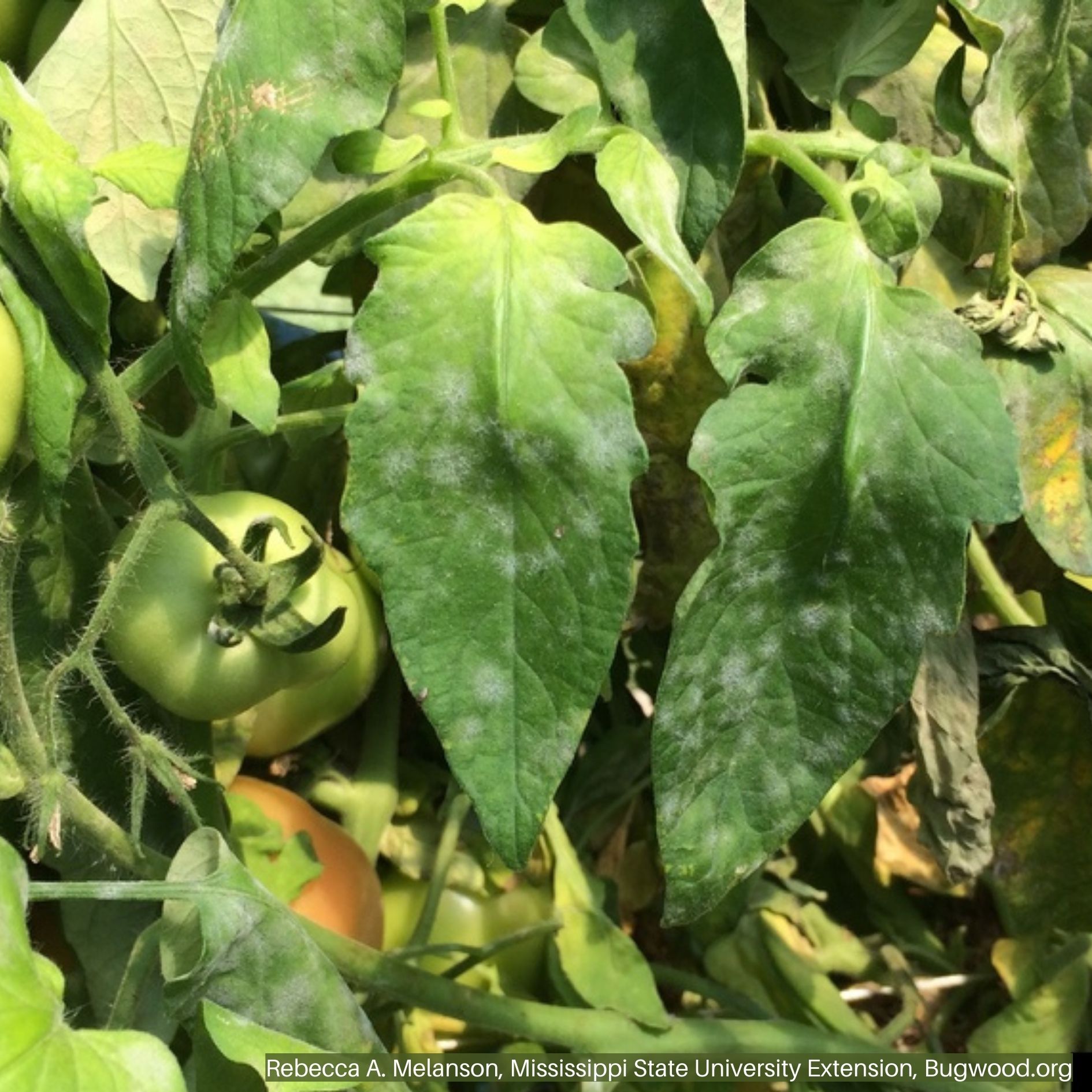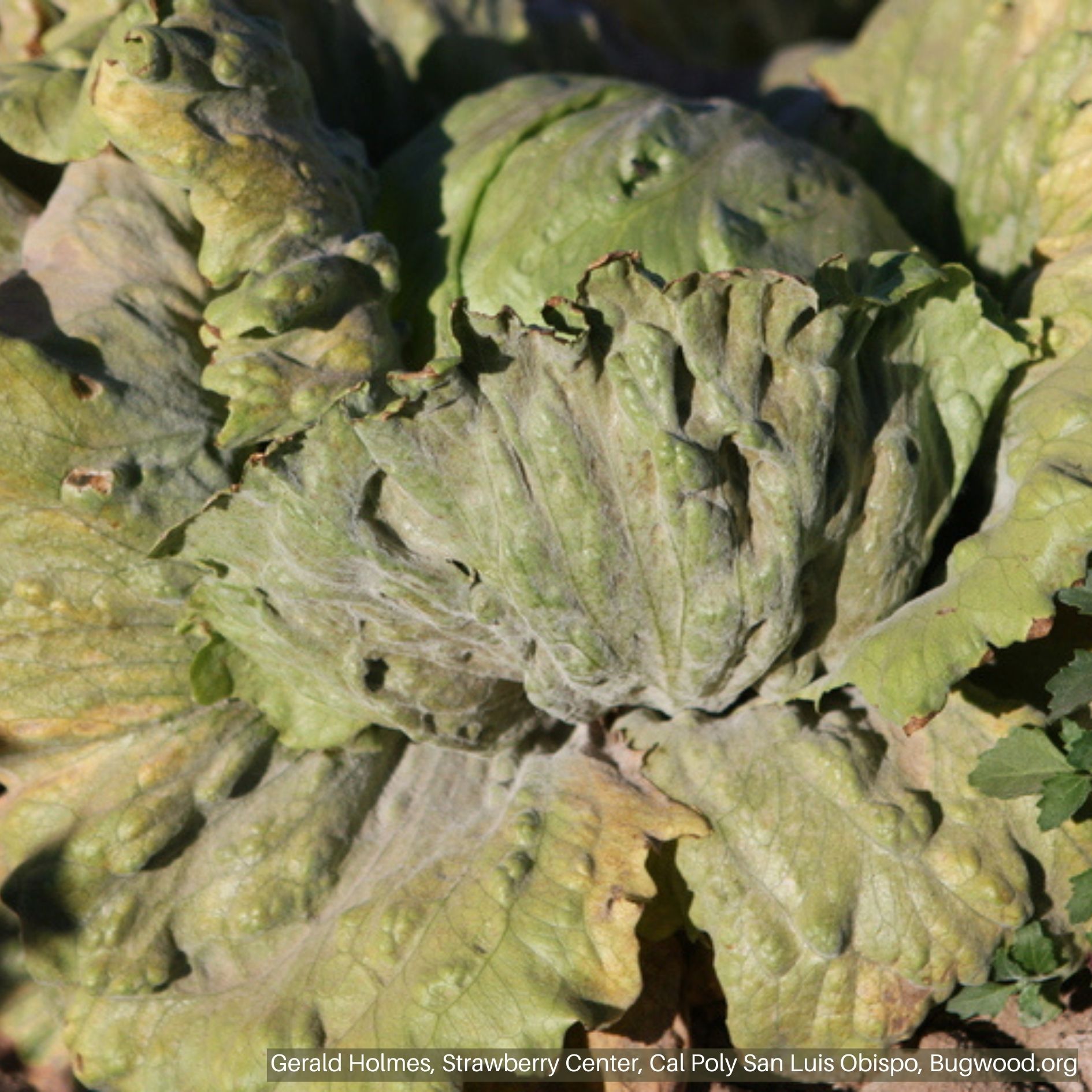Powdery Mildew on Vegetables
HOSTS
- Brassicas
- Cucurbits
- Root Crops
- Solanaceous Crops
- Legumes
- Hemp
DESCRIPTION
Powdery mildew is widespread in Utah and affects many vegetable, fruit, and landscape plants. There are several species of powdery mildew fungi, and typically they target just a single host, or only hosts in related plant families. Powdery mildew is easily identifiable as white, “powdery” patches on the surface of leaves. Utah’s environment is favorable to this disease. It thrives in warm temperatures, humid plant canopies, and poor airflow.
BIOLOGY
Powdery mildew fungi are considered “obligate parasites” meaning that they cannot grow without a living host.
Late in the growing season, the powdery mildew fungus initiates sexual reproduction in some plant species. This sexual phase forms resting structures on foliage and other plant parts that are important for overwintering survival. The resting structures are fruiting bodies (chasmothecia) that contain the overwintering spores and are resistant to low temperatures and drought. With warm humid conditions in spring, chasmothecia release wind-blown spores that cause primary infections on susceptible hosts.
SYMPTOMS
- White, powdery fungal growth occurs on leaves, stems, and petioles.
- Initial infections begin as a few, small, white fungal spots. Eventually, these spots spread and enlarge throughout the plant. As leaves become colonized, they may turn yellow and wilt, exposing the fruit to sunscald and resulting in poor yield.
SCOUTING
Early detection of powdery mildew is critical, so it is important to consistently scout plants for disease.- Begin scouting a few weeks after planting, inspect leaves for infections.
- Start with the lowest leaves of the plant, and check the undersides and the leaf surface for white, powdery areas.
GENERAL MANAGEMENT
- Plant resistant varieties. Several varieties of vegetable crops are labeled with some level of resistance against powdery mildew
- After harvest, remove or plow infected plant material. Powdery mildew overwinters on plant debris and removal can reduce disease occurrence the following season.
- Increase plant spacing to allow for better air movement. Reducing the canopy humidity that can trigger powdery mildew infections.
- Morning irrigation will allow excess moisture to dry from the ground and leaves, reducing evening humidity. Where possible, switch to drip irrigation.
FUNGICIDES
Many fungicides (both organic and synthetic) are available for commercial operations and home gardeners. Consider fungicide treatments when the first sign of powdery mildew is found. Repeated applications should occur every 7–10 days (or according to label recommendations).
Note that some products and product combinations can cause phytotoxicity (plant injury), such as:
- Oils applied at temperatures over 85°
- Sulfur applied at temperatures over 80° F
- Mixing oil and sulfur or applying within 2 weeks of each other





